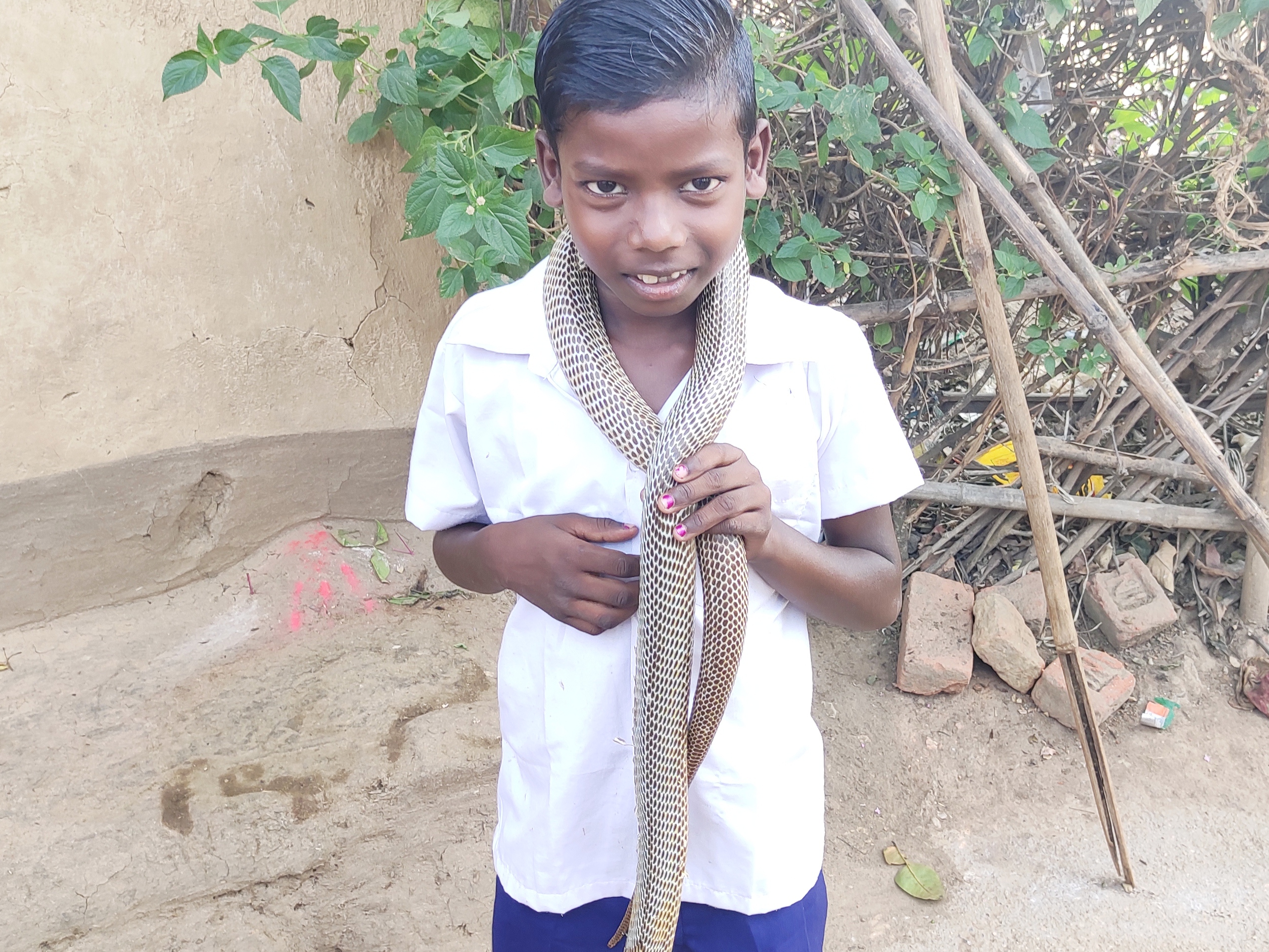- Snake charming is a centuries-old tradition among the Bedia people of India.
- Charmers say they provide an essential service to locals by handling and removing snakes in the area.
- But many argue snake charming is cruel to animals.
- And officials in the country have outlawed the practice, leaving many Bedia unable to support themselves.
- Visit Insider’s homepage for more stories.
KOLKATA, India – Snake charmer Chitto Bedia lives in the village of Poradih, a small out of the way town in the state of West Bengal, India. The 60-year-old is a member of the Bedia, a tribe famous (and in some ways infamous) for its involvement in India’s snake charming culture. He concocts herbal treatments he claims can cure infertility. He says that the medicine has been made through natural herbs obtained from the forest and hours of incantation.
When he’s not collecting herbs, Chitto is snake charming, continuing a tradition that has existed within his tribe and India for thousands of years – but not without controversy.
Read on to learn more about the Bedia and their snake charming traditions.
Around 100 Bedia families live in Poradih, and almost all of them are involved in catching and handling snakes in some way. They're considered some of the poorest people in the state, and tend to live in mud huts, surviving off of $1 or $2 a day, unable to practice their traditional livelihood.

That's because snake charming was banned in India in 1972, as part of a wildlife protection act. While enforcement of the law had for years been relatively lax, officials have begun cracking down on the practice in the last decade. The bill prohibits residents from keeping or using wild animals for commercial purposes, allowing officials to throw offenders in jail or requiring them to pay hefty fines.
Bedia charmers are outraged by the crackdown, and say snake charming is part of their history and cultural heritage. Plus, they add, their work helps protect the community.

"We are summoned by the people whenever snakes enter their households, even during late-night hours. But forest officials threaten us and snatch the reptiles from us" said Nagen Bedia, 45. "It hampers our livelihood. We get nothing despite doing a favor to the people and preventing them from being bitten by the poisonous reptiles."
Here, an older Bedia man has a snake wrapped around his head.
The work of the snake charmer is also symbolic. In traditional snake charming, the snake is supposed to represent evil. The charmer shows his worth by confronting and taming the evil through his song.

Fun fact: Snakes don't have ears, and so the "charming" sounds of a snake charmer's instrument don't actually do anything to the animal. Instead, snakes respond to the movement of the snake charmer's instrument, called a been. The movement of the been acts as a threat to the snake, and they often lash out in response.
The charmers in Bedia primarily work with Indian cobras, a type of poisonous snake that kills around 10,000 people a year in India.

The cobra is able to spit its venom when it feels attacked by forcing venom through its fangs.
To protect themselves, snake charmers often de-fang or de-venom their snakes.
Opponents to snake charming say the practice is cruel.

Traditionally, snake charmers have removed a snake's venom sac to ensure that a snake bite won't be fatal. That process can be crude and has to be repeated multiple times throughout a snake's life (sacs refill once they've been emptied).
Here, a man is using a knife to remove the snake's venom sac.
Venom removal, say experts, can be stressful to the animal.

"These crude methods of venom collection are extremely harmful to the snake. Proper methodology includes collecting venom without causing harm or too much stress to the snake," Kartik Sunagar, assistant professor at Indian Institute of Science, told Insider. "Snakes are protected species in India and should not be handled without appropriate permission."
But the alternative treatment is actually worse. Many charmers have taken to removing a snake's fangs, or simply tying a snake's mouth shut, in order to safely work with the animal.

Without fangs, a snake is unable to eat, and so it slowly starves to death over the course of weeks or months. Charmers say they can always find another snake when one dies.
Here, Negan holds a snake in his mouth.
For many in the community, the snake charming life holds less and less appeal. Younger people in Poradih feel there's no future in practicing the craft.

"We do not want to become a snake charmer. It has no future," Sajen Bedia, a 22-year-old who works as a laborer, told Insider.

"The harassment from the forest officials makes it further difficult to continue our work. The young generation is moving out in search of other livelihoods," he continued.
Illiteracy and poverty are prevalent in Bedia communities. Children start working at a young age and child marriage is common.

It's also become acceptable in some Bedia communities for parents to send their daughters out to become sex workers in order to help support their families.
The problem, it seems, that many Bedia aren't sure what life looks like without snake charming.

"The majority [of Bedia] do not have any cultivable land and depend solely on snake charming for livelihood," recommends Amit Kumar Ghosh, the superintendent anthropologist at the Anthropological Survey of India.

"The government should introduce welfare schemes to connect them to the mainstream and ensure that their children also get quality education and better quality of life," he continued.
For now, though, Chitto will continue the tribal tradition.

